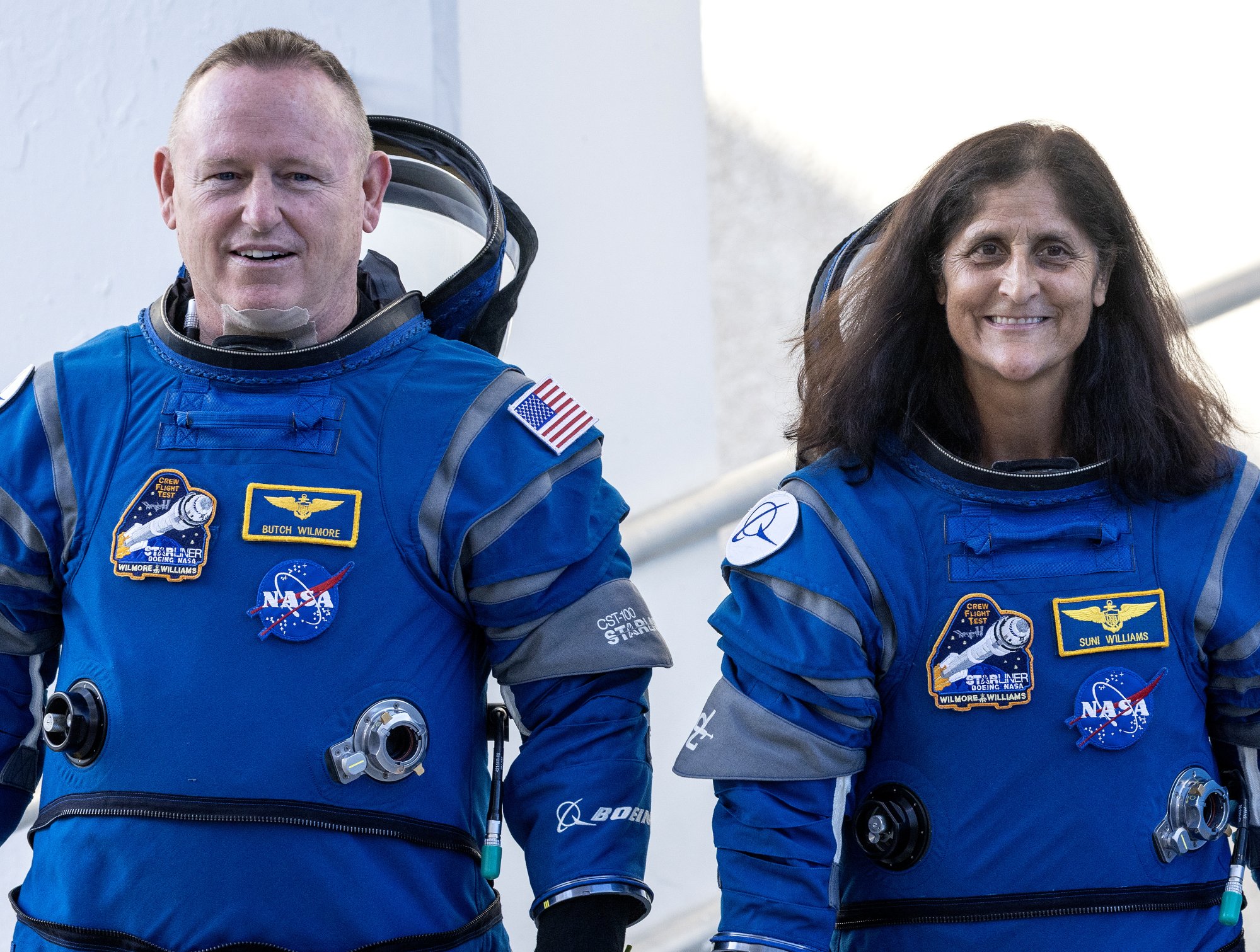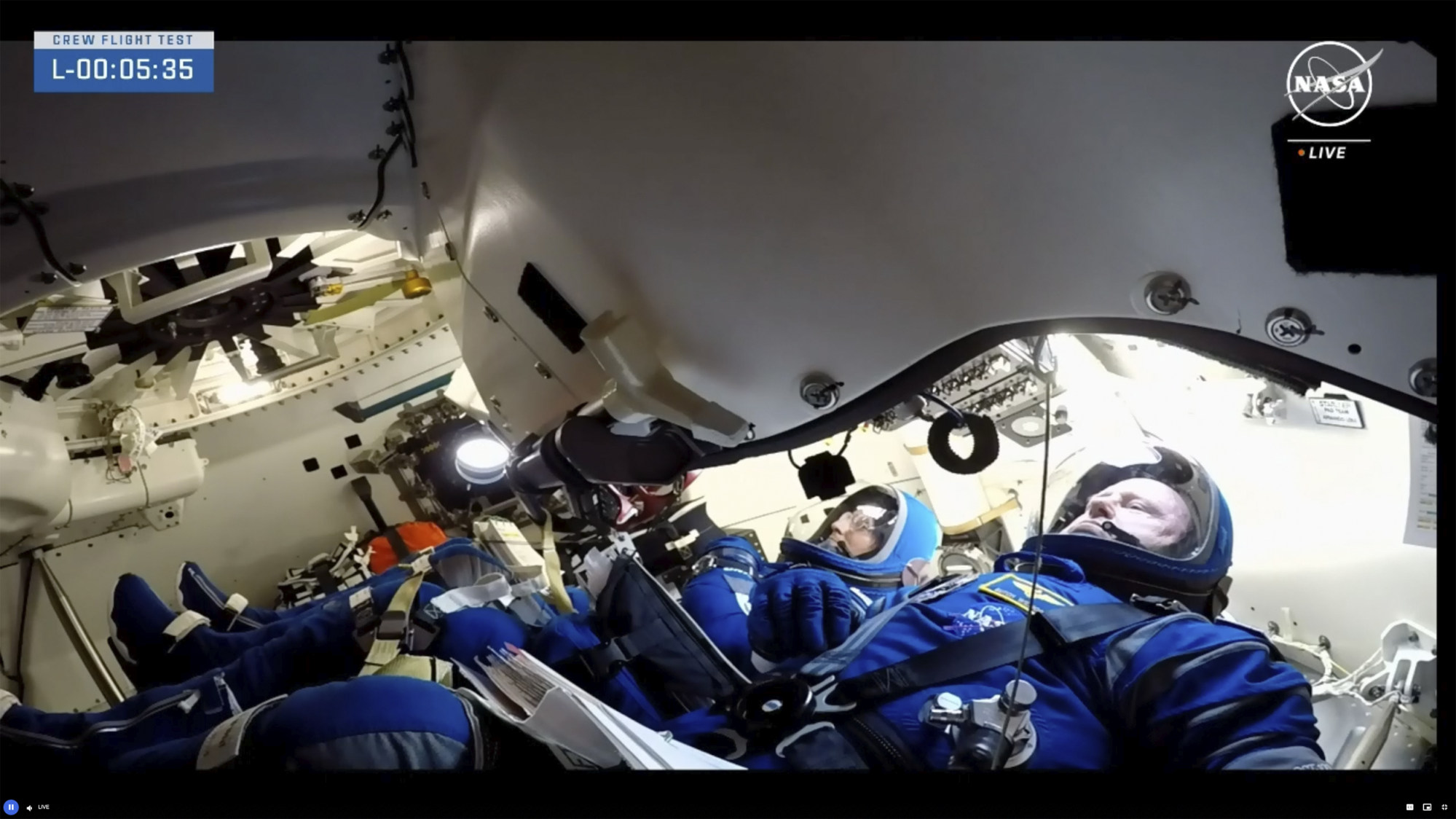Boeing launched astronauts for the first time on Wednesday, belatedly joining SpaceX as a second taxi service for Nasa.
A pair of Nasa test pilots blasted off aboard Boeing’s Starliner capsule for the International Space Station, the first to fly the new spacecraft.
The trip by Butch Wilmore and Suni Williams was expected to take 25 hours, with an arrival on Thursday. They will spend just over a week at the orbiting lab before climbing back into Starliner for a remote desert touchdown in the western US on June 14.
Years late because of spacecraft flaws, Starliner’s crew debut comes as the company struggles with unrelated safety issues on its aeroplane side.
Wilmore and Williams – retired Navy captains and former space station residents – stressed repeatedly before the launch that they had full confidence in Boeing’s ability to get it right with this test flight. Crippled by bad software, Starliner’s initial test flight in 2019 without a crew had to be repeated before Nasa would let its astronauts strap in. The 2022 do-over went much better, but parachute problems later cropped up, and flammable tape had to be removed from the capsule.
Wednesday’s launch was the third attempt with astronauts since early May, coming after a pair of rocket-related problems, most recently last weekend. A small helium leak in the spacecraft’s propulsion system also caused delays, but managers decided the leak was manageable and not a safety issue.
“I know it’s been a long road to get here,” Nasa’s commercial crew programme manager Steve Stich said before the weekend delay.

Boeing was hired alongside Elon Musk’s SpaceX a decade ago to ferry Nasa’s astronauts to and from the space station. The space agency wanted two competing US companies for the job in the wake of the space shuttles’ retirement, paying US$4.2 billion to Boeing and just over half that to SpaceX, which refashioned the capsule it was using to deliver station supplies.
SpaceX launched astronauts into orbit in 2020, becoming the first private business to achieve what only three countries – Russia, the US and China – had mastered. It has taken nine crews to the space station for Nasa and three private groups for a Houston company that charters flights.
The lift-off from Cape Canaveral Space Force Station was the 100th of an Atlas V for rocket maker United Launch Alliance. It was the first ride for astronauts on an Atlas rocket since John Glenn’s Mercury era more than 60 years ago; the rocket usually launches satellites and other spacecraft.

Despite the Atlas V’s perfect record, the human presence cranked up the tension for the scores of Nasa and Boeing employees gathered at Cape Canaveral and Mission Control in Houston.
Boeing’s Starliner and SpaceX’s Dragon are designed to be fully autonomous and reusable. Wilmore and Williams occasionally will take manual control of Starliner on their way to the space station, to check out its systems.
If the mission goes well, Nasa will alternate between SpaceX and Boeing for taxi flights, beginning next year. The backup pilot for this test flight, Mike Fincke, will strap in for Starliner’s next trip.
“When you have a new spacecraft, you need to learn all about it and this has been a great exercise,” Fincke told reporters late last week.

